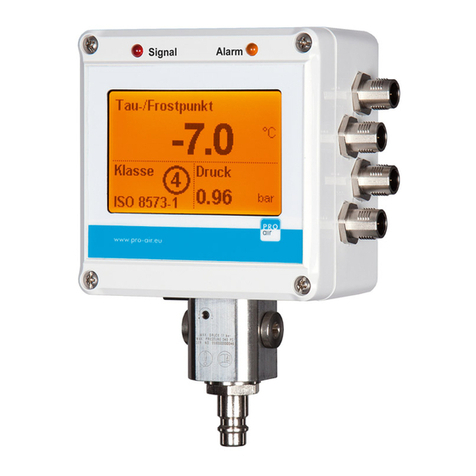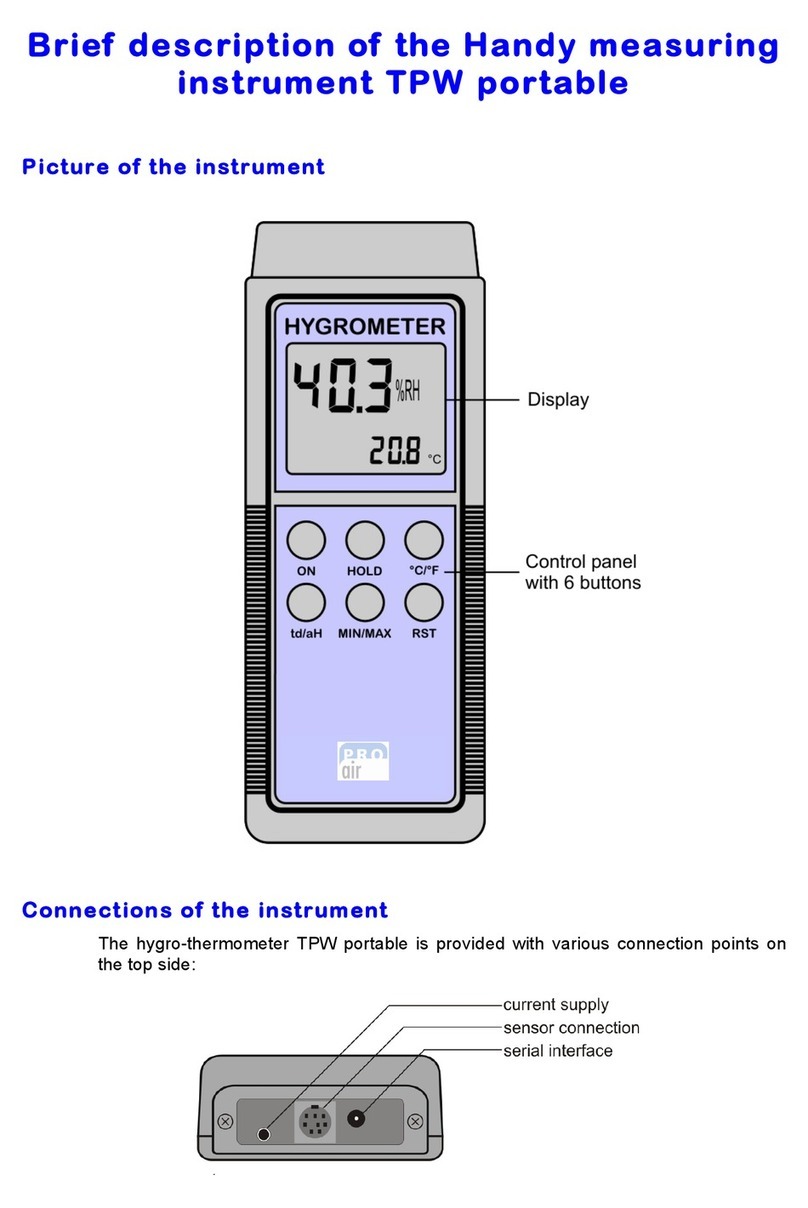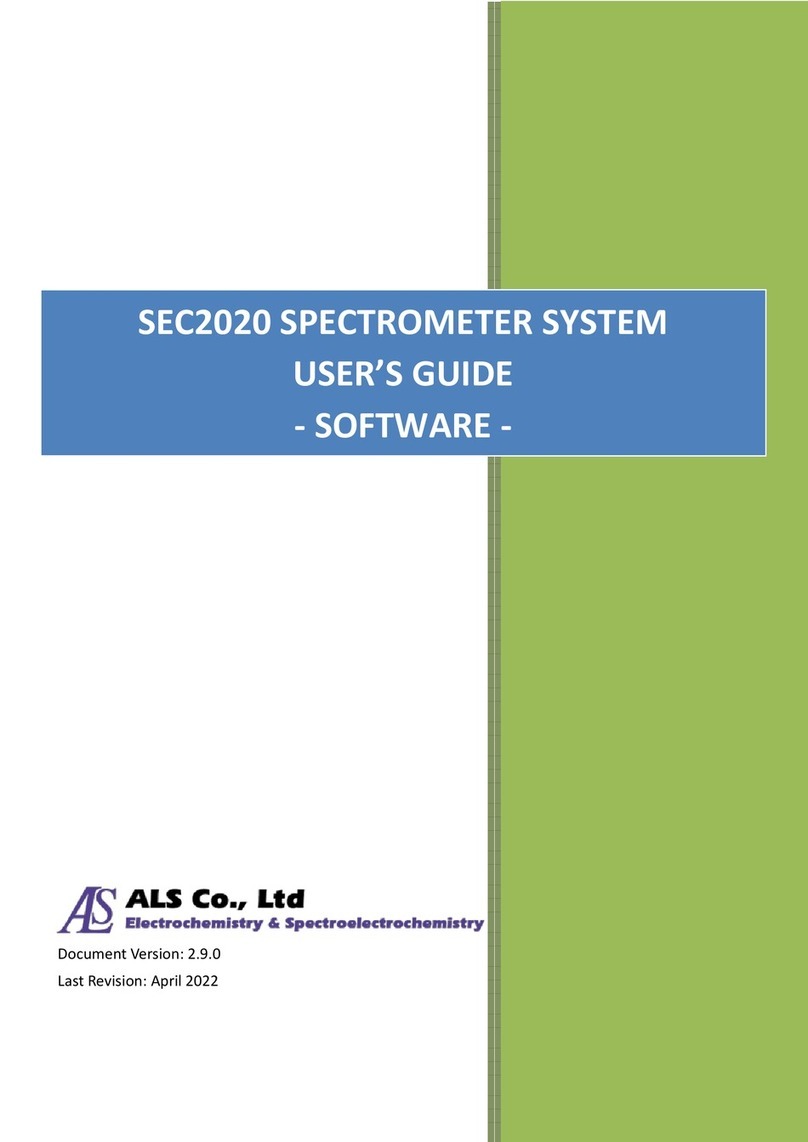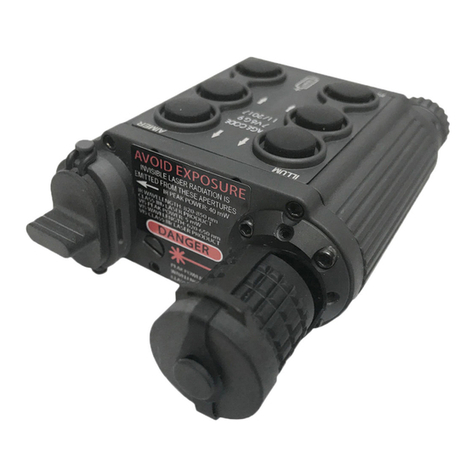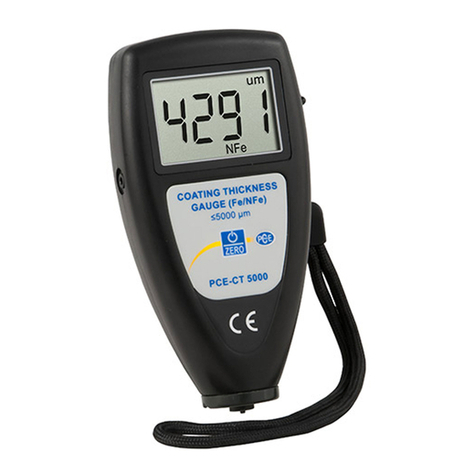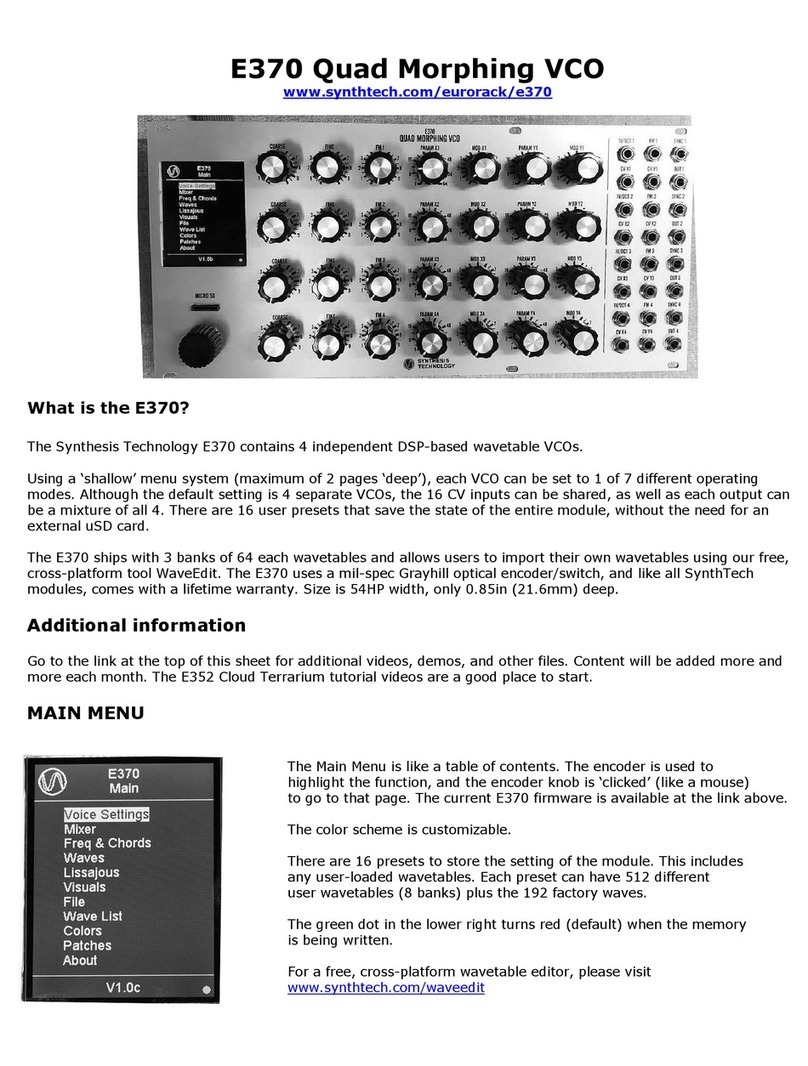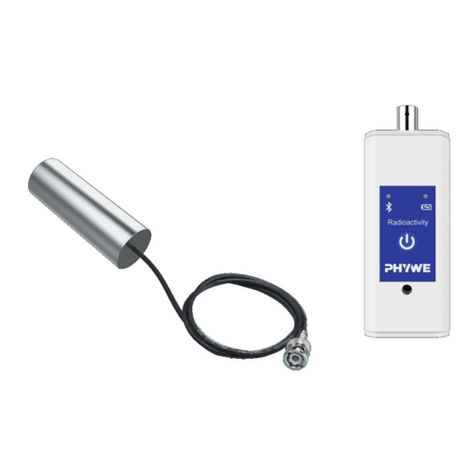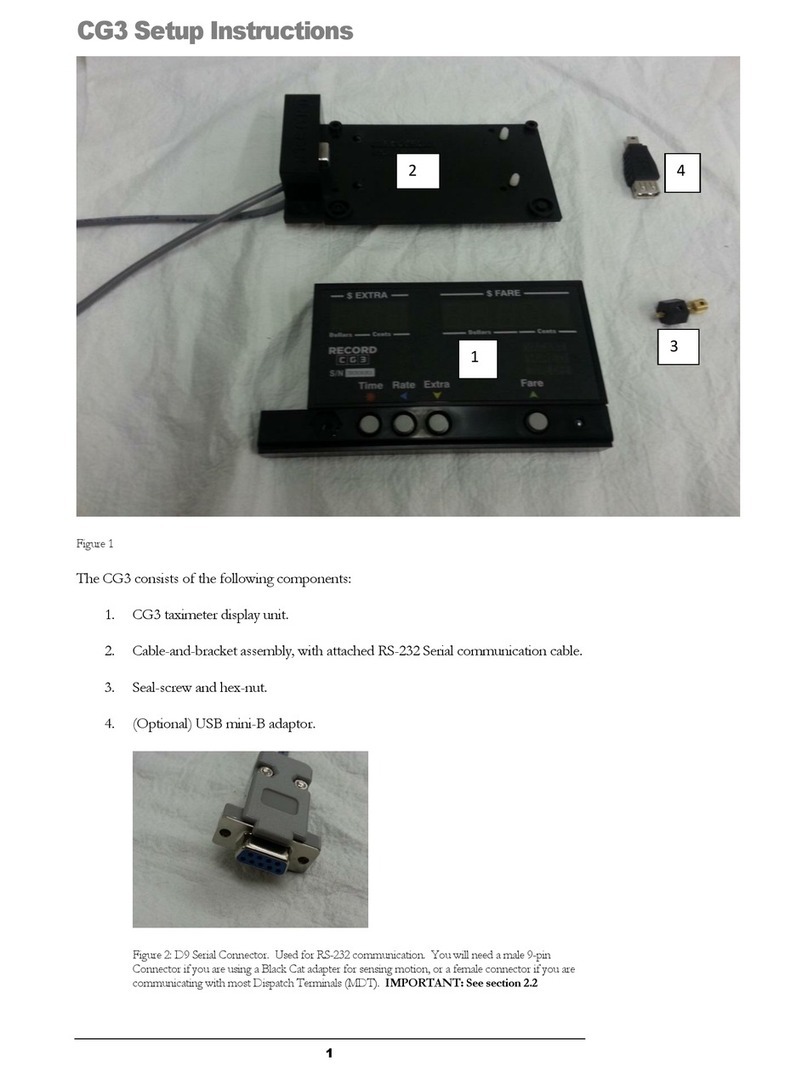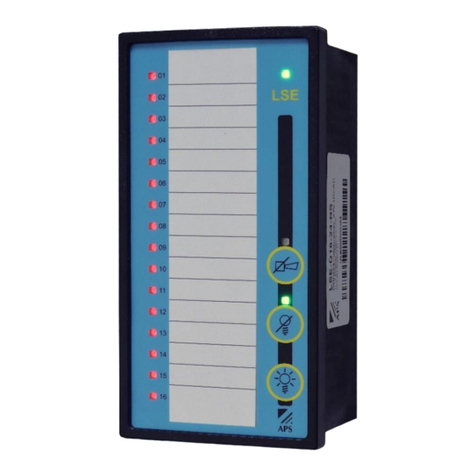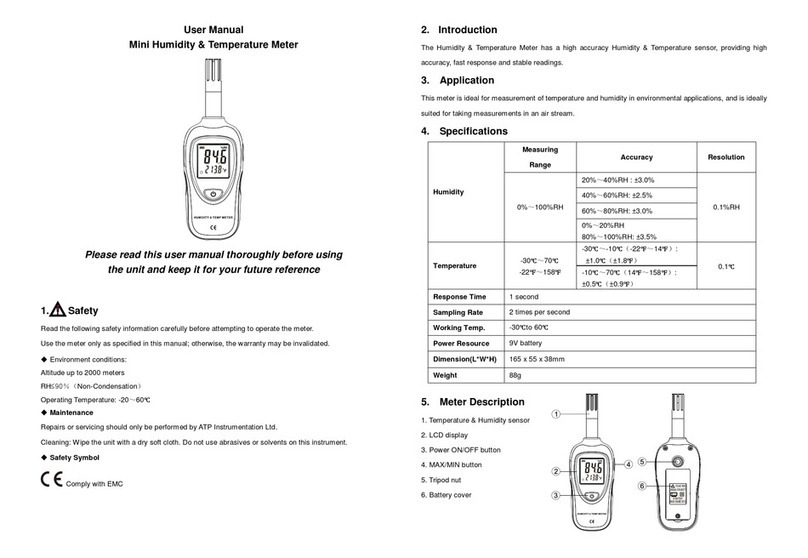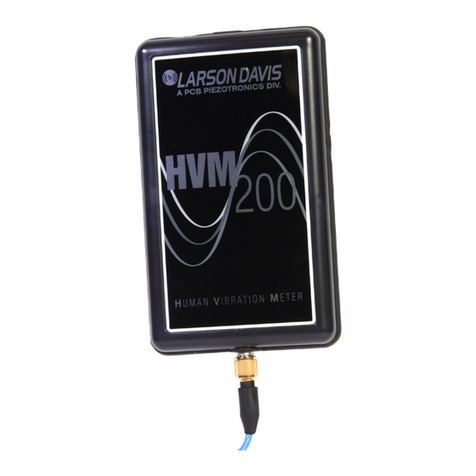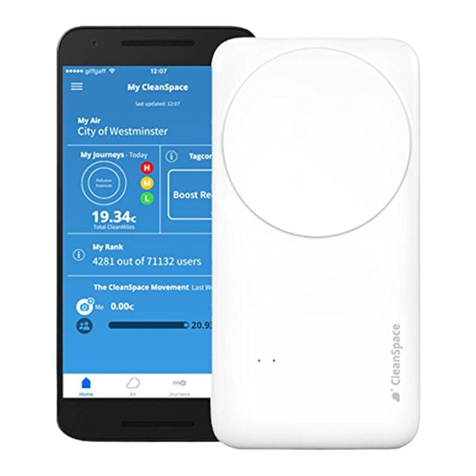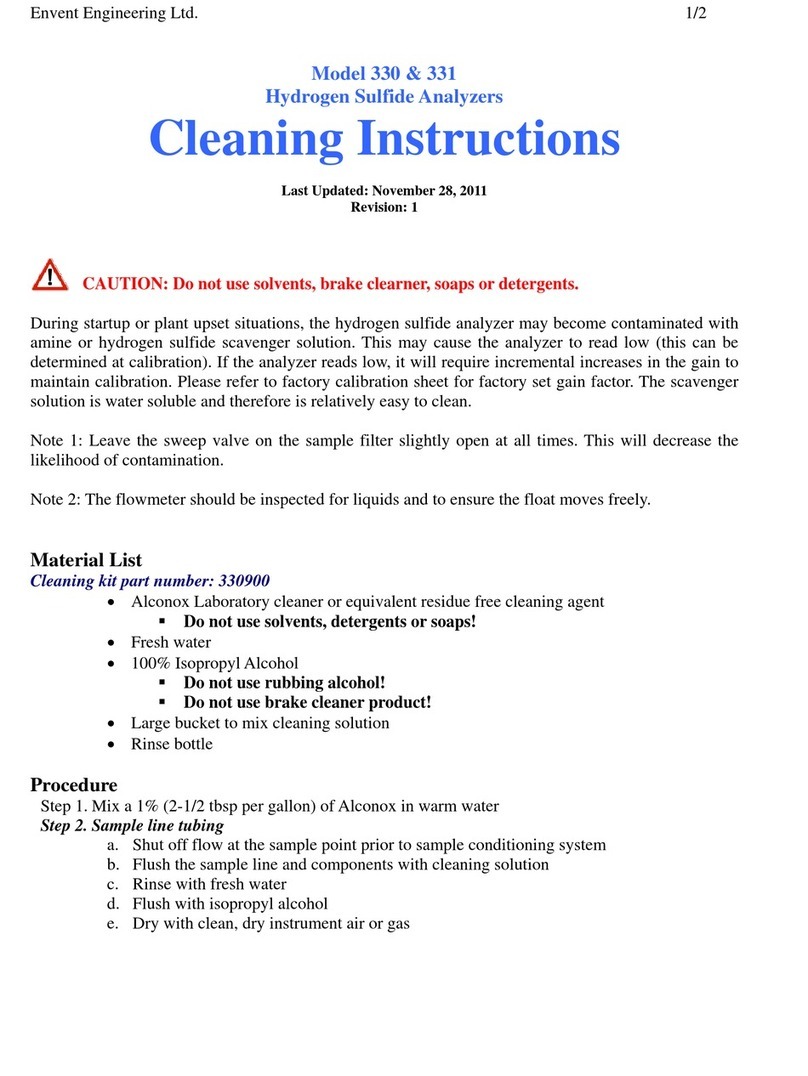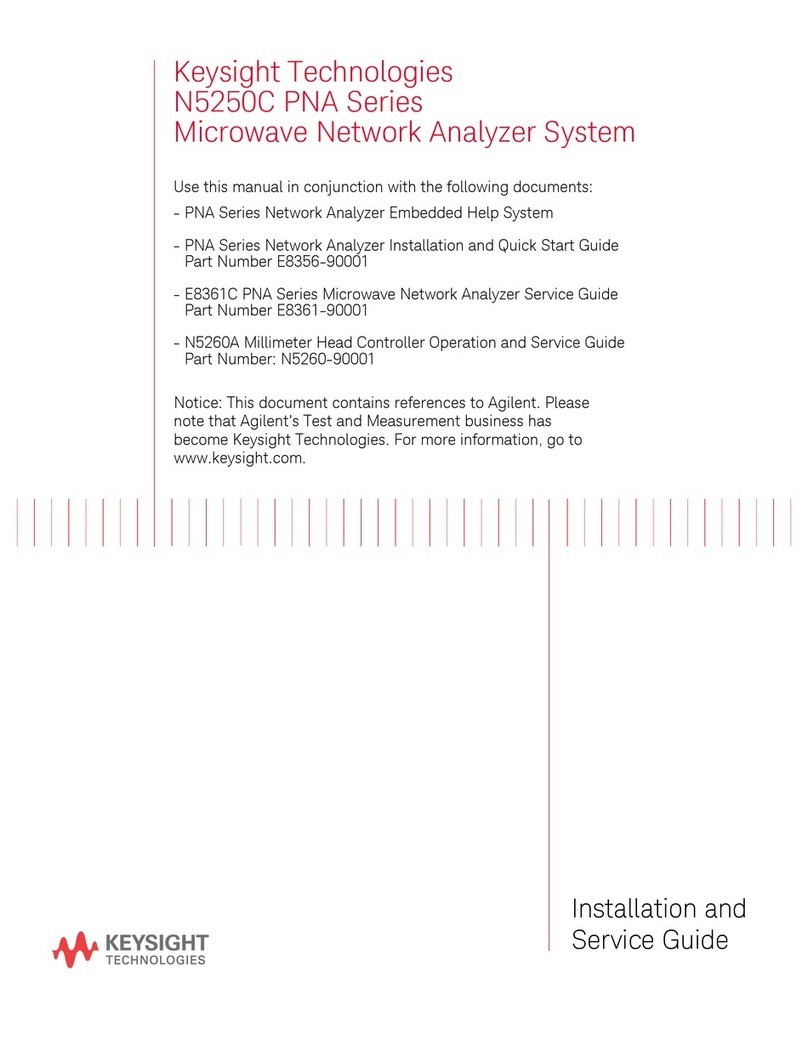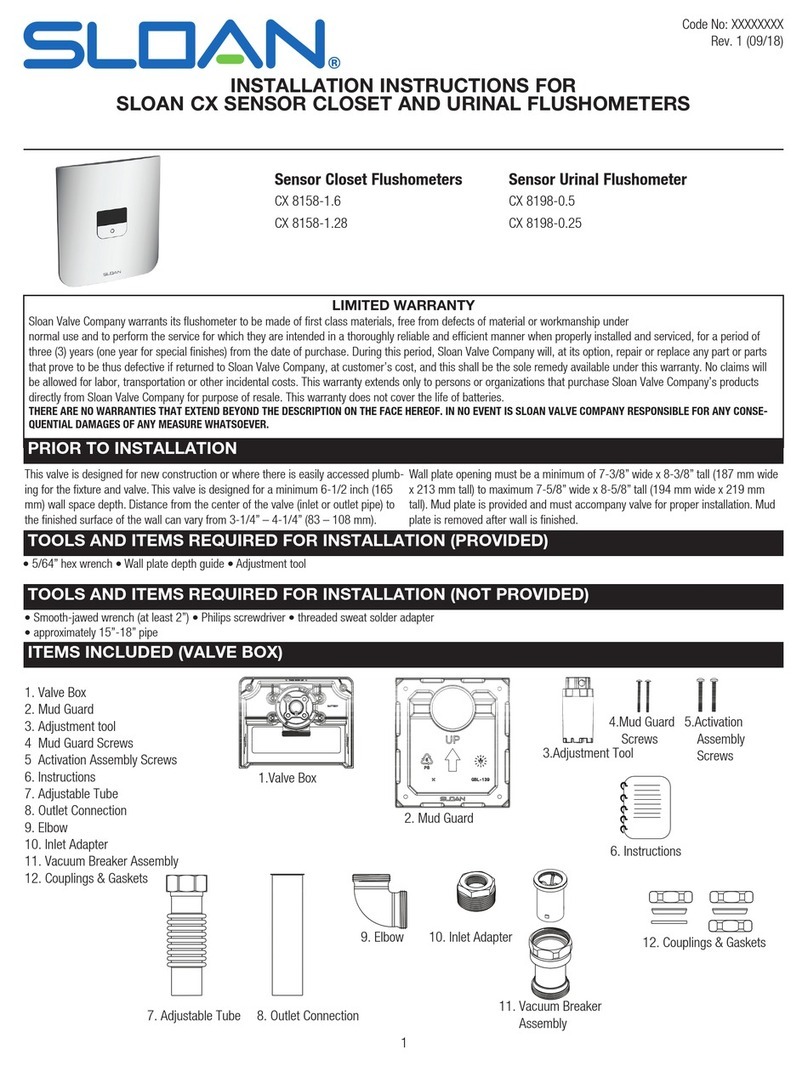ProAir TPK 21 Operating instructions

Portable Pressure- and Dew-Point Monitoring Device !
TPK 21 portable / TPK 61 portable
Functional description and operating instructions

Table of contents
1.
Scope of Delivery
1
2.
General dangers and precautions
2
2.1.
Safety instructions for electrical connection
2
2.2.
Safety instructions for compressed air systems
3
3.
Important application notes
4
3.1.
Avoiding damage to the measuring probe
4
3.2.
Calibration and measuring accuracy
4
3.3.
Intended application
5
4.
Humidity measurement in compressed air systems
5
5.
Function
5
6.
Mounting of the device
6
6.1.
Safety instructions
6
6.2.
Application notes
6
6.3.
Procedure for installation
7
6.4.
Mounting
7
7.
Connection at the compressed air network
8
7.1.
Direct stationary assembly at the compressed air line
8
7. 3 .
Application of a pre-filter / water separator
9
7. 4 .
Mounting examples
9
7. 4 .
Adjustment of measurement chamber choke
10
7. 5 .
TPK portable Start-up
11
7. 6 .
For the rarest of the cases…
11
8.
Operation
12
8.1.
Views of unit
12
8.1.1.
Top view (open box)
13
8.2.
Display
14
8.2.1.
Description of display
15
8.2.1.1.
Description of main screen
15
8.2.1.2.
Description info screen
16
8.2.2.
Adjustment of display fields
17

Table of contents
8.2.2.1.
Possible display variation concerning the different fields
18
8.3.
Personalising Password
20
8.4.
Adjustment of national languages
25
8.5.
Information
28
8.6.
Switching the heating(Heater) system On and Off
31
8.7.
Factory settings
34
8.8.
Outputs
37
8.9.
Touchscreen calibration
42
8.10.
Measurement value simulation
45
8.11.
Statistics Reset
50
8.12.
Reset Fault Memory
53
8.13.
Quit Alarm
56
8.14.
Quit Service Request
59
8.15.
Filter
62
8.16.
Units setting
65
8.17.
Setting the Date / Time
67
8.17.1.
Setting the Date
67
8.17.2.
Setting the Time
72
9.
Configuration of Relay Adjustments
76
9.1.
Setting Source (Output Parameters)
78
9.2.
Setting the Relay Switching Characteristics
79
9.3.
Setting the Limit Values
80
10.
Configuration of Analog Output
82
10.1.
Selection of desired Source (Output Parameter)
84
10.2.
Selection of the desired analog output value
85
10.3.
Configuration of lower analog output value
86
10.4.
Configuration of upper analog output value
87
11.
Configuration of Alarm Output
88
11.1.
Setting of desired alarm value 1
89
11.1.1.
Setting of desired measurement - channel (source)
89

Table of contents
11.1. 2 .
Setting Pre-alarm
92
11.1. 3 .
Setting Main-alarm
96
11.1. 4 .
Setting delay
101
11. 2 .
Setting of desired alarm value 2
103
12.
Technical Datas
104
13.
Modbus
106
13.1.
Supported MODBUS features
106
14.
Data logging
107
15.
Appendix
110
15.1.
Menu structure
111
15.1.1.
Menu item: Main
111
15.1.2.
Menu item: Out
112
15.1.3.
Menu item: Alarm
113
15.2.
System References and Messages
114
15.3.
EG-Conformance Details
115
15.4.
Guarantee
115
15.5.
Accessories
116
15.5.1.
Connecting optional accessories
117
15.5.2.
PIN - Assignment for Conctor
118
15.5.3.
Voltage supply from an external source of supply
120
15.6.
Service and Calibration
121
16.0.
Setting examples
122
16.1.
Setting example: Dew Point Control
122
16.2.
Setting example: Minimum Pressure Control
123

1 Scope of Delivery
1
!
Please read the operating instructions before using this device. In addition to the
operating instructions, important information is provided regarding installation,
initial start-up and troubleshooting in each of the relevant chapters.
The pressure dew-point monitor is supplied ready to use. The scope of delivery includes
the AC adaptor, stylus, stylus holder (which may be attached to the dew-point meter) and
relevant operating instructions.
-6/4 mm PTFE compressed - air - hose
-Bypass valve, to test humidity condition in the piping system
Bypass valve:
Please use bypass valve before using the measurement device to test, if there is
any liquid water inside the piping system, which could damage the sensor.
This is especially recommended after a dryer breakdown.
!
PTFE hose with coupling plug:
The PTFE hose with coupling plug is necessary to connect the device with the
compressed air system.

2 General dangers and precautions
2.1 Safety instructions for electrical connection
2
Please read the following warnings prior to initial start-up! The symbols used in
the operating instructions are intended to call your attention to the safety risks. It
is not enough to simply observe the symbol. It is important to read the full text
provided in the safety instructions!
This symbol indicates a potential risk to humans, equipment or the environment. The
information provided must be strictly observed in order to prevent risks.
This symbol indicates important instructions for use and tips that are important in
order to successfully complete tasks, and which must be strictly observed to
ensure good results.
!
!
!
The device must only be supplied with extra-low voltage. The device's other
electrical connections must also only be connected with electronic components
that are operated via an extra-low voltage supply.
Contact with live parts may result in death. Installation of the controller and
maintenance work must therefore only be carried out by trained personnel. The
power supply must be turned off for installation and servicing.
Also avoid touching the plug or any other electronic components when the
power is switched off. Electrostatic phenomena may damage electronic
components.
The product is not intended to control systems with safety-related functions. Even
during normal operation there is a risk of unexpected malfunction, for example
due to a surge or the failure of a component. The user must make sure that no
damage can occur as a result of a malfunction or undefined device status. This
can be achieved, for instance, through the use of redundant components or
safety circuits.
Incorrect screw tightening torques at the connecting terminals or the use of
unsuitable tools can damage the terminal, resulting in damage to insulation or
the contacts. Poorly connected cables can come loose during operation, posing
a considerable risk to safety. Contact resistance at clamp connections results in
increased heat production that can cause a fire to start. Incorrectly wired
connections can destroy electrical components and result in other damage.
!

2.2 Safety instructions for compressed air systems
3
In the case of unforeseen events, the energy stored in compressed air can cause
material damage or result in injury. The risk increases with the operating
pressure of the system. All work must therefore be performed by appropriately
trained personnel. Appropriate care is necessary when performing any work on
the compressed-air system in order to avoid damage!
The loud venting noise produced upon uncontrolled opening of pressurised lines
can damage hearing or startle other people in the vicinity.
At high flow rates, foreign bodies in the air stream can behave like projectiles
and cause injury to the skin or eyes.
The built-in measuring chamber with sensor is designed to handle pressures of
up to 17 bar. This maximum permissible operating pressure must not be
exceeded. Upstream components must be dimensioned according to the
system's operating pressure and temperature.
The warranty will become null and void if the sensor housing is opened, or in
the event of improper handling or the use of force.
!

3 Important application notes
3.1 Avoiding damage to the measuring probe
3.2 Calibration and measuring accuracy
4
Measuring devices are sensitive and must be handled with care:!
Avoid shocks, impacts and vibrations.
Prior to installation, check that there is no condensation, oil or dirt at the measuring
point! Should this be the case, repair and dry out the system!
The measuring system is not suitable for use with compressed air with a high oil
content, as directly covering the sensor with a film of oil impairs its response, blocks
the pores of the filter and damages the filter choke.
!As a rule of thumb: If you have any questions, contact the manufacturer.
!Do not attempt to experiment with the device as you may cause faults and damage
!to occur!
!
Prior to delivery, the pressure dew-point sensor is adjusted and tested by means of a
complex calibration procedure involving several temperatures and humidity points. It is not
possible for the end user to calibrate the device.
Please observe the permissible temperature range for use. Excessive temperatures reduce
the measuring accuracy. The probe will be damaged if the temperature limit is exceeded.
The specified data, in particular the desired measuring accuracy, are valid at a temperature
of 20°C. In principle, the lower the temperature at the sensor, the more accurate the
measurement result. If possible, measurements should be taken in a cool area, or the gas
should be cooled to ambient temperature.
With proper use, the probe will have a lifespan of many years. Nevertheless, to prevent
errors, it is important that the sensor be calibrated once a year, according to the
manufacturer's specifications. This particularly applies when the probe is used in critical
applications within the lower dew-point measuring range.

3.3 Intended application
4 Humidity measurement in compressed air systems
5 Function
5
The new TPK portable series is intended to be used to measure the pressure dew
points, pressure and temperature of clean, oil-free compressed air, which is free of
any abrasive, corrosive, caustic, toxic, flammable and combustible components. For
the scope of application and the calibrated measuring range, please refer to the
technical data.
!
In the industrial sector, quality requirements for compressed air are becoming ever
stricter. Humidity and condensation are not permitted in compressed air and often cause
damage to machines and lead to reduced production quality. Compressed-air dryers are
commonly used. When used correctly, these reduce the moisture content of the air and
ensure the production of high-quality compressed air.
However, problems with dryers are often detected very late on, usually when damage has
already occurred. A large quantity of humidity will have already entered the compressed-
air network, and considerable efforts will be required to dry the system out again. The
high quality standards of the industrial sector call for continuous, reliable and stable long-
term monitoring of the humidity content. This is the only way to detect problems early,
before any damage has occurred.
With its large measuring range, the new TPK series is the ideal measuring system for
monitoring refrigeration, adsorption and membrane dryers. The device is primarily
intended for stationary applications but is also suitable for use as a portable measuring
device thanks to its simple connection system.
If compressed air is not dried before being fed into the compressed-air network, significant
quantities of condensate can form in the pipe network, resulting in the malfunctioning of
valves and pneumatic components, ultimately leading to loss of production. The pressure
dew point in compressed-air systems is therefore a key factor in determining air quality
and should be measured in all systems.
The new TPK portable series offers the ideal device for monitoring compressed-air quality
(humidity, pressure and temperature) and giving timely warning, before any damage has
occurred.
The series has a built-in measuring chamber with a protection filter and filter choke, as
well as a plug connection for a 7.2 mm NW compressed-air socket. Power is supplied via
battery or mains adapter. Initial set-up of the measuring system therefore requires no
interference with the compressed-air network, nor any electrical installation work.

6 Mounting of the device
6.1 Safety instructions
6.2 Application notes
6
The device must only be used for its intended purpose.
Installation of the controller and maintenance work must only be carried out by
trained personnel. The power supply must be turned off for installation and
servicing. The applicable safety regulations must be observed! All work on the
compressed-air system must be carried out under pressure-free conditions.
The device must only be operated with extra-low voltage. This also applies to all
external connections, such as the relay outputs.
!
The air quality at the site of installation must be checked prior to assembly.
Repairs must be made to the system in the case of any water or oil leakages.
Contact with large quantities or water or oil may damage the sensor.
The compressed air must be drawn from the upper side of the pipe. The device
must be mounted above the compressed-air line so that any condensation
produced in the event of failure cannot flood the measuring chamber.
Use only suitable materials. The materials used must be impermeable to water
vapour. Therefore please do not use regular polyurethane hoses! The only
recommended material for flexible hose connections is PTFE ("TEFLON"). All
metals are suitable down to -30°Ctpd. Below this, stainless steel is the
preferred choice. Avoid using excessively long sample-gas lines or unnecessary
connectors.
The sensors on upstream components must not diffuse water vapour into the
surrounding environment! Please use only high-quality components, e.g. ball
valves with PTFE seals.
Carefully seal all points of connection with the sensor or measuring chamber.
However, never use anaerobic liquid sealants, as these maydamage the sensor
element!
Heavy particle loads will clog the filter or filter choke over time, resulting in a
delayed response. In critical cases, an additional fine filter must be installed
upstream of the measuring device.
!

6.3 Procedure for installation
6.4 Mounting
7
If using compressed air of unknown quality, use a condensate separator or
particle filter. Additional components must be suitable for the intended use!
In EMC-critical environments the measuring chamber should be electrically
isolated from the metal pipes of the compressed-air network. The use of a PTFE
or Polypropylene double nipple is an example of a suitable solution.
Installation involves the following steps:
-!Testing of impurities and liquid water via filter choke (included in scope of
delivery).
-!Connection to the compressed-air network via PTFE hose
-!Connection to the power supply (if requested)
-!Setting of the switching points
-!Testing and function control
Please put the box on a sufficient big and flat surface.
Please take care, that the device couldn’t fall down because of vibrations.

7 Connection at the compressed air network
7.1 Direct stationary assembly at the compressed air line
8
The device will be connected to the compressed air piping coupling with a „plug“ (included).
Via the included PTFE-hose the air will be guided into the integrated measuring chamber.
"
There has to be a definded flow to grant correct functionality and highest accuracy.
"
The basic setting for the flow is 60 l / h, ex works.
A closed throttle would cause higher values or cause an alarm.
"
For monitoring the whole compressed air station, the measuring device should be installed
after dryer and filtration.
You can as well choose a random position within the plant to monitor partial segments,
or the operating air for a special machine or area.
"
In order to avoid accumulation"of"condensation"water
in case of an error, it is neccessary to mount the coupling on top oft he piping system.
"
"Extreme high flow or abrupt change of pressure have to be avoided, because this could
damage the sensor!
7.2 Einsatz eines Vorfilters / Wasserabscheiders
7.3 Montagebeispiele
9
Je nach Zustand der Druckluftanlage und dem Verteilnetz ist es möglich, dass unerwartet
Schmutz, Kondensat oder Öl an der Messstelle mit austritt. Um bei solchen kritischen
Einsatzbereichen Beschädigung des Messfühlers zu vermeiden, kann ein Wasserabscheider
mit Feinfilter vor das Gerät geschaltet werden. Die vorgeschalteten Komponenten dürfen den
Feuchtegehalt der Luft nicht verändern oder das Ansprechverhalten übermäßig
verschlechtern. Geeignete Komponenten erhalten Sie bei uns auf Anfrage
Das Gerät ist für eine Vielzahl von Einsatzbereichen geeignet. Durch die integrierte
Messkammer und dem flexiblen Schlauch lässt sich das Gerät leicht an den vorgesehenen
Einsatz anpassen:
!
Anschluss an einer Schnellkupplung 7,2 mm NW:
Dieser Anschluss ist schnell und einfach, ohne aufwendige
Installation in Sekunden erledigt.
-Am Schlauchende wird ein Stecknippel NW 7,2
montiert.
-Das Gerät wird ohne weitere Befestigung direkt auf die
Kupplung aufgesteckt.
Anschluss des PTFE-Schlauchs an das Messgerät:
-Stecken Sie das offene Ende fest auf die „INLET“ -
Buchse des Messgerätes.
-Beachten Sie die bitte dringend die Druckvorgabe
(16 bar / 230 psi) um Schäden am Gerät zu
vermeiden.
7.2 Einsatz eines Vorfilters / Wasserabscheiders
7.3 Montagebeispiele
9
Je nach Zustand der Druckluftanlage und dem Verteilnetz ist es möglich, dass unerwartet
Schmutz, Kondensat oder Öl an der Messstelle mit austritt. Um bei solchen kritischen
Einsatzbereichen Beschädigung des Messfühlers zu vermeiden, kann ein Wasserabscheider
mit Feinfilter vor das Gerät geschaltet werden. Die vorgeschalteten Komponenten dürfen den
Feuchtegehalt der Luft nicht verändern oder das Ansprechverhalten übermäßig
verschlechtern. Geeignete Komponenten erhalten Sie bei uns auf Anfrage
Das Gerät ist für eine Vielzahl von Einsatzbereichen geeignet. Durch die integrierte
Messkammer und dem flexiblen Schlauch lässt sich das Gerät leicht an den vorgesehenen
Einsatz anpassen:
!
Anschluss an einer Schnellkupplung 7,2 mm NW:
Dieser Anschluss ist schnell und einfach, ohne aufwendige
Installation in Sekunden erledigt.
-Am Schlauchende wird ein Stecknippel NW 7,2
montiert.
-Das Gerät wird ohne weitere Befestigung direkt auf die
Kupplung aufgesteckt.
Anschluss des PTFE-Schlauchs an das Messgerät:
-Stecken Sie das offene Ende fest auf die „INLET“ -
Buchse des Messgerätes.
-Beachten Sie die bitte dringend die Druckvorgabe
(16 bar / 230 psi) um Schäden am Gerät zu
vermeiden.
!

7.2 Application of a pre-filter / water separator
7.3 Mounting examples
9
Depending on the state of the compressed-air system and distribution network, it is possible
for dirt, condensate or oil to leak out from the measuring point. In order to avoid damage to
the probe in such critical areas of application, a water separator with a fine filter can be
connected upstream of the device. The upstream components must not alter the moisture
content of the air or unduly impair the response. We can provide you with a list of suitable
components upon request.
The device is suitable for a variety of applications. The flexible design of the measuring
chamber allows it to be easily adapted to the intended use:
Connection to a 7.27,2 mm NW quick coupler:
This connection can be quickly and easily performed
within minutes, without any complex installation.
-The device is connected directly to the coupling, and no
further mounting is required.
!
Connection of PTFE - hose with the measuring device:
Please insert the the hose-end without plug into the
„INLET“ port of the device.
Please notice urgently the pressure specification
(16 bar/ 230 psi) to avoid damage inside the device.

7.6 Connection of power supply
10
The device is operated with extra-low voltage. It is possible to use the
device via integrated battery with our permanent power supply
connection. A suitable mains adapter is provided to use the device for
long term measurements.
The power supply unit is plugged into one of the lower two M12 sockets
(„Analog Output“ or „Modbus") on the right-hand side of the device
and screwed into place.
No complex electrical installation is necessary, and the device is
immediately ready for operation
The AC adaptor with Europlug is of a high-quality design with a wide-
range input. It is suitable for a 90 - 240 V power supply and is therefore
suitable for Europe-wide use.
Connection Diagram FGPx remote probe
Follow the guidelines for plugs and
sockets!!
Do not try to force the connector
when plugging it in.
!
Connection option 2
Connection option 1
Connection option 1
Connection option 2

7.5 Start-Up
7.6 For the rarest of the cases…
11
The device immediately starts up when you push the „On/Off „button. The first measured
values are displayed immediately after turning on the device. The measured values are likely
to fall immediately following connection to the compressed-air network. The values will
stabilise after a short time. Depending on the system, the following values should be set:
-!For refrigeration dryers: approx. 0 to 7°Ctdp
-!For an additional membrane dryer: approx. -20 to -10°C
-!For an adsorption dryer: approx. -60 to -30°C
If the device does not start up, please check the following points:
-Is the battery complete charged ?
-Is the mains plug correctly plugged in ?
-Is the M12 socket of the power supply correctly connected to the device ?
!
On / Off button
If you have examined all the possible causes and still have not managed to rectify the
malfunction, please immediately contact our customer service department. Do not
open the device, as this will invalidate the warranty claim !

8 Operation
8.1 View of unit
12
!
Top view
(transport box open)
General information on the description of the operating procedures
All images of the displays, numerical values and configurations are used by way
of example to explain and clarify the information provided. The actual display on
your device may differ according to the selected settings or ambient conditions.

8.1.1 View from the top (with open transport box)
13
Alarm output connection
Relay output connection
Analog output connection
Connection for external mains
adapter
Modbus output connection
Connection for external mains
adapter
LCD touch-display
Alarm LED
Service LED
On / Off
button
plug-connection to
compressed air
USB-port
(connection for firmware-update)
Slot for SD-card
(data logger)

8.2 Display
14
The built-in touch display is a monochrome FSTN dot-matrix display with white
backlight and a resolution of 160 x 110.
All values may be set or changed accordingly via the screen using the stylus
provided or with careful finger movements.
!
Caution: The use of pointed objects, such as ballpoint pens or pencils, can
destroy the display and invalidate the warranty!

7.5 Start-Up
7.6 For the rarest of the cases…
11
The device immediately starts up when you push the „On/Off „button. The first measured
values are displayed immediately after turning on the device. The measured values are likely
to fall immediately following connection to the compressed-air network. The values will
stabilise after a short time. Depending on the system, the following values should be set:
-!For refrigeration dryers: approx. 0 to 7°Ctdp
-!For an additional membrane dryer: approx. -20 to -10°C
-!For an adsorption dryer: approx. -60 to -30°C
If the device does not start up, please check the following points:
-Is the battery complete charged ?
-Is the mains plug correctly plugged in ?
-Is the M12 socket of the power supply correctly connected to the device ?
!
On / Off button
If you have examined all the possible causes and still have not managed to rectify the
malfunction, please immediately contact our customer service department. Do not
open the device, as this will invalidate the warranty claim !

8.2.1 Description of the Displays
8.2.1.1 Description of the Main Screen
15
Once the device is connected to the power supply, a welcome screen with the
logo and company name briefly appears and then the main screen is displayed.
The screen is divided into 3 fields (a main field and 2 smaller fields).
All fields can be individually adjusted.
Hauptfeld
Feld 1
Feld 2
Infofeld
displays the physical measuring value
Info Screen (temporary), please
notice next page
Unit actual measuring value
Currently measured value
This field shows a further current
measured value with physical unit.
(individually adaptable)
This field shows for example the actual humidity class
acc. to ISO 8573-1 or a further measured value with
physical unit. (individually adaptable)
Class
4
ISO 8573-1
Pressure
1.17
bar
oC
Dew-/Frostpoint
- 7.0
H HOLD
Field 2
Field 1
Info Screen
Main Screen
Class
4
ISO 8573-1
Pressure
1.17
bar
oC
Dew-/Frostpoint
- 7.0
H HOLD
Other manuals for TPK 21
1
This manual suits for next models
1
Table of contents
Other ProAir Measuring Instrument manuals


